Balancing the Nervous System: How Ear Seeds Can Help Improve Your Clients' Health Outcomes
Do you ever feel like your clients are not seeing the results you expect despite their efforts to improve their health?
Chronic low-grade stress may be the culprit.
In this article, we will explore the negative health impacts of chronic stress on the nervous system and how it can hinder the healing process.
We will also discuss the work of Dr. Robert Naviaux on cell danger response, the importance of the vagus nerve, and the stages of healing. Finally, we will introduce ear seeds as a natural, non-invasive therapy to balance the autonomic nervous system and support the healing process.
Negative Health Impacts of Chronic Low-Grade Stress
Chronic low-grade stress is a type of stress that is ongoing and often subtle, and it can have negative impacts on the body's physiology. This stress can come from a variety of sources, such as work, relationships, and financial stress.
Stress can also come in the form of pathogens, infections, exposure to toxic mold, environmental toxicants, adverse early childhood experiences, and psychological trauma.
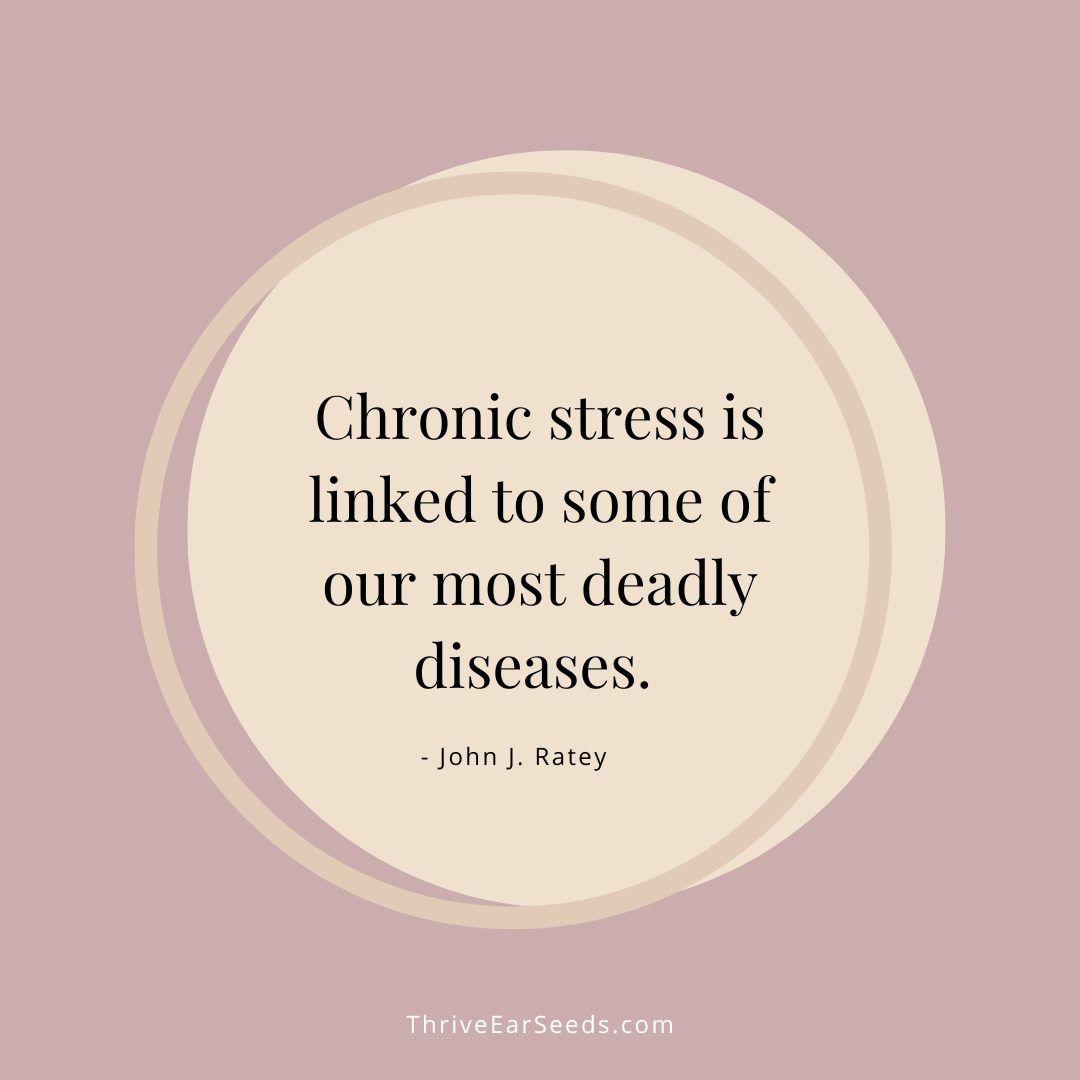
When the body experiences stress, it activates the sympathetic nervous system, which is responsible for the body's "fight or flight" response. This response can be helpful in short-term stressful situations, but chronic low-grade stress can keep the body in a constant state of sympathetic nervous system activation, which can lead to negative health impacts.
Some of the negative health impacts of chronic low-grade stress include:
- Chronic diseases: Chronic stress has been linked to several chronic diseases, such as heart disease, diabetes, and hypertension.
- Sleep disorders: Chronic stress can interfere with sleep quality and quantity, leading to sleep disorders such as insomnia.
- Digestive issues: Chronic stress can affect digestion and lead to digestive issues such as irritable bowel syndrome (IBS) and acid reflux.
- Mental health issues: Chronic stress has been linked to depression, anxiety, and other mental health issues.
- Physical symptoms: Chronic stress can lead to physical symptoms such as pain, headaches, muscle tension, and fatigue.
The Importance of the Autonomic Nervous System in Healing
The autonomic nervous system (ANS) is responsible for regulating the body's involuntary functions, such as heart rate, breathing, and digestion. It has two main branches: the sympathetic nervous system (SNS) and the parasympathetic nervous system (PNS). The SNS is responsible for the body's "fight or flight" response, while the PNS is responsible for the body's "rest and digest" response.
When the body is in a state of chronic low-grade stress, the SNS can become stuck in a state of activation, leading to an imbalance in the ANS. This imbalance can make it difficult for the body to fully heal and can contribute to chronic health issues.
To fully heal, the body needs to be in a balanced ANS state, with both the SNS and PNS working together. This balance allows the body to rest and digest, which is essential for healing.
Dr. Robert Naviaux's Work on Cell Danger Response
Dr. Robert Naviaux is a professor of genetics at the University of California, San Diego, and he has conducted extensive research on the cell danger response (CDR). The CDR is a protective response that cells use to defend against danger, such as infections, toxins, stress and even psychological trauma.
When the body is in a state of chronic low-grade stress, the CDR can become stuck in a state of activation, which can make it difficult for the body to heal. This is because the CDR is designed to be a short-term response, and if it becomes chronic, it can lead to negative health impacts.
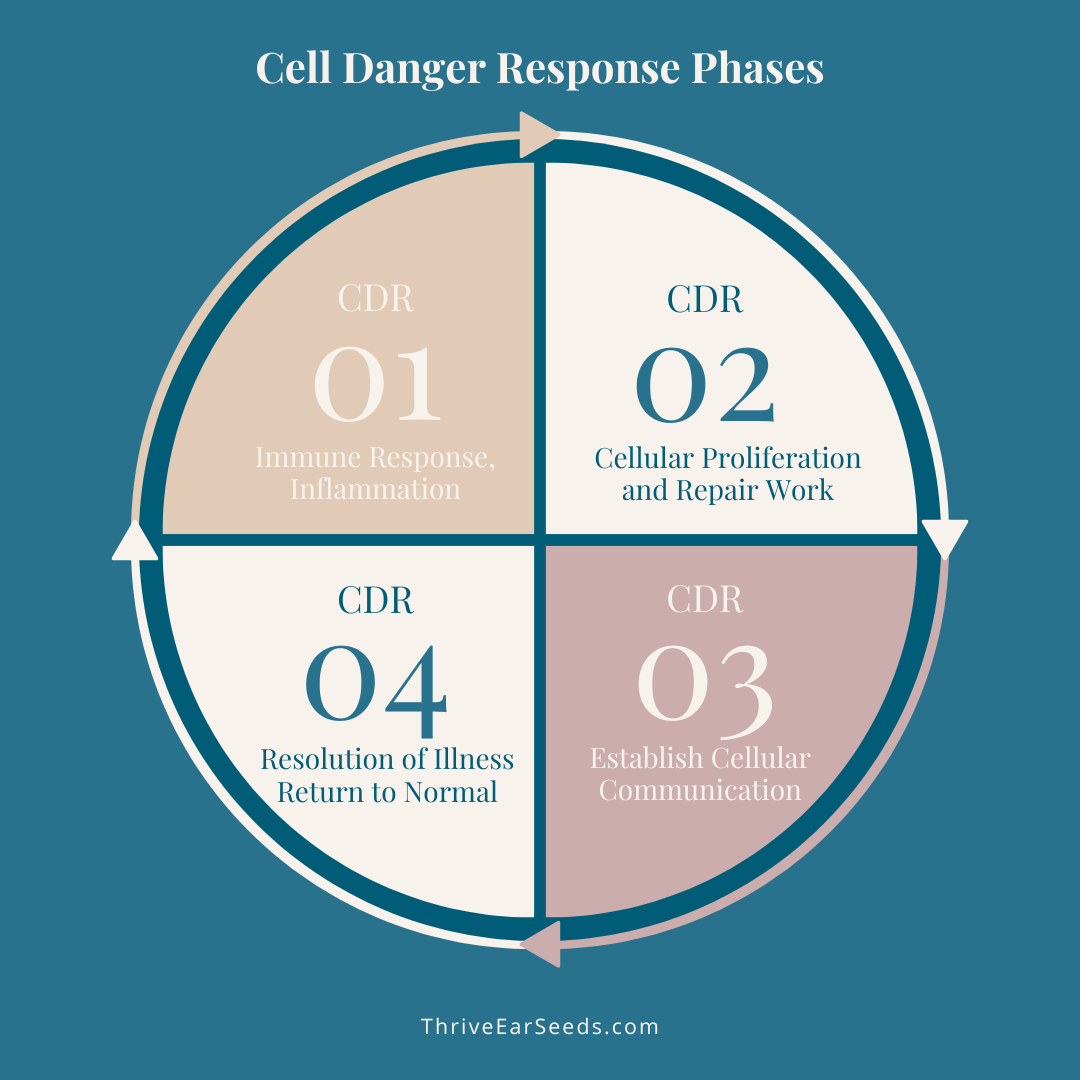
While the cellular and metabolic processing of CDR are quite complicated, here is a simplified version of the four stages:
- Initiation: This stage occurs when the cell detects a potential danger and activates its defense mechanisms including immune activation, inflammation, and pathogen/toxin isolation.
- Proliferation: This stage occurs when the cell ramps up its repair processes and new cells are made from tissue-specific stem cells
- Differentiation & Development: This stage occurs when the cells begin to establish communication among cellular networks and the ANS.
- Resolution: This stage occurs when the danger has been eliminated, and the cell can return to its normal state
For full healing to occur, the cells must move through each stage of the CDR. If this process gets derailed or “stuck” at any stage, specific types of symptoms can emerge, and it can become difficult to overcome health issues.
For example, if stuck in CDR 1, then allergies and asthma can develop. If stuck in CDR 2, unchecked new cell growth can lead to cancer and if CDR 3 is unchecked this may lead to autoimmune diseases, pain, and fatigue.
According to Dr. Robert Naviaux’s article in the journal Mitochondria entitled Cell danger response Biology—The new science that connects environmental health with mitochondria and the rising tide of chronic illness:
“At a cellular level, the cell danger response cannot be turned off until the cell receives the final ‘all clear’ signal. Until then, the CDR remains stuck in a repeating loop that blocks further healing in an attempt to eradicate perceived danger. This can lead to long-term suffering, disability and chronic disease. Only when a cell perceives safety can it heal completely”
The Role of the Vagus Nerve in Health and Healing
The vagus nerve is the longest cranial nerve in the body, and it plays a critical role in regulating the ANS. It is responsible for the body's "rest and digest" response, which is essential for recovery from illness, toxins, and stress.
The vagus nerve is also involved in activating the CDR's resolution stage, which is critical for full healing to occur.
When the vagus nerve is activated, it triggers the release of anti-inflammatory molecules that help resolve inflammation and promote the body’s natural healing mechanisms. However, the ANS needs to maintain a balanced state of “safety and calm” for a long enough period that the body can finish the CDR cycle.
As anyone suffering from a chronic illness knows, this process is no small feat. You can think about it as a “rewiring” phase that may take up to three months to occur or longer depending on the source of the stress.
Additionally, the vagus nerve helps the body shift from a state of stress and sympathetic nervous system activation to a state of calm and parasympathetic nervous system activation. By consistently activating the vagus nerve, the body can eventually return to a normal state of CDR signaling and achieve optimal health outcomes.
The Stages of Healing and the Role of Ear Seeds
The ear is the only place where the vagus nerve reaches the surface of the body, which makes it an ideal location to apply acupressure to stimulate it. Acupressure with ear seeds is a natural, non-invasive modality that can help balance the ANS and activate the vagus nerve, which can, over time, help the body exit a CDS phase where it’s been stuck, supporting the body's in recovery.
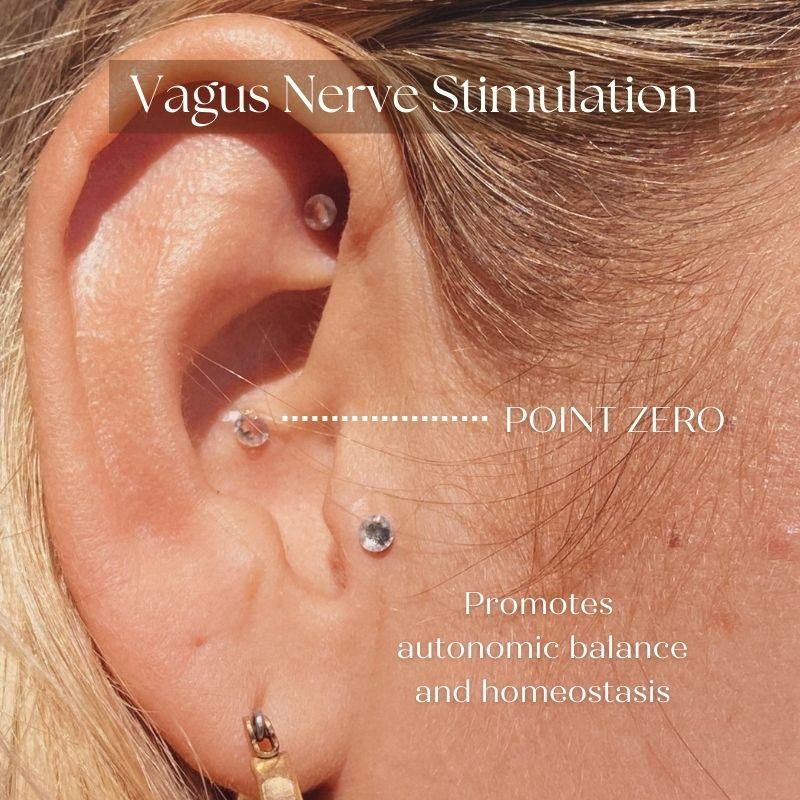
Two points that you can start with for ANS balance are Shen Men, located in the trianglar fossa and Point Zero, located on the root of the helix in the center of the ear. Then you can customize an ear seed protocol based on your clients’ symptoms. Ear seeds can be left in place for up to five days, and then they should be removed to let the ears rest between 2 – 12 hours as needed.
Based on our experience, patients that can wear ear seeds for 12 weeks consistently will get the most benefit.
Clients can take a break every 4-5 days to let the ears rest from the stimulation. We suggest giving clients a chart to track daily ear seed usage with reminders of when to take the ear seeds off and rest.
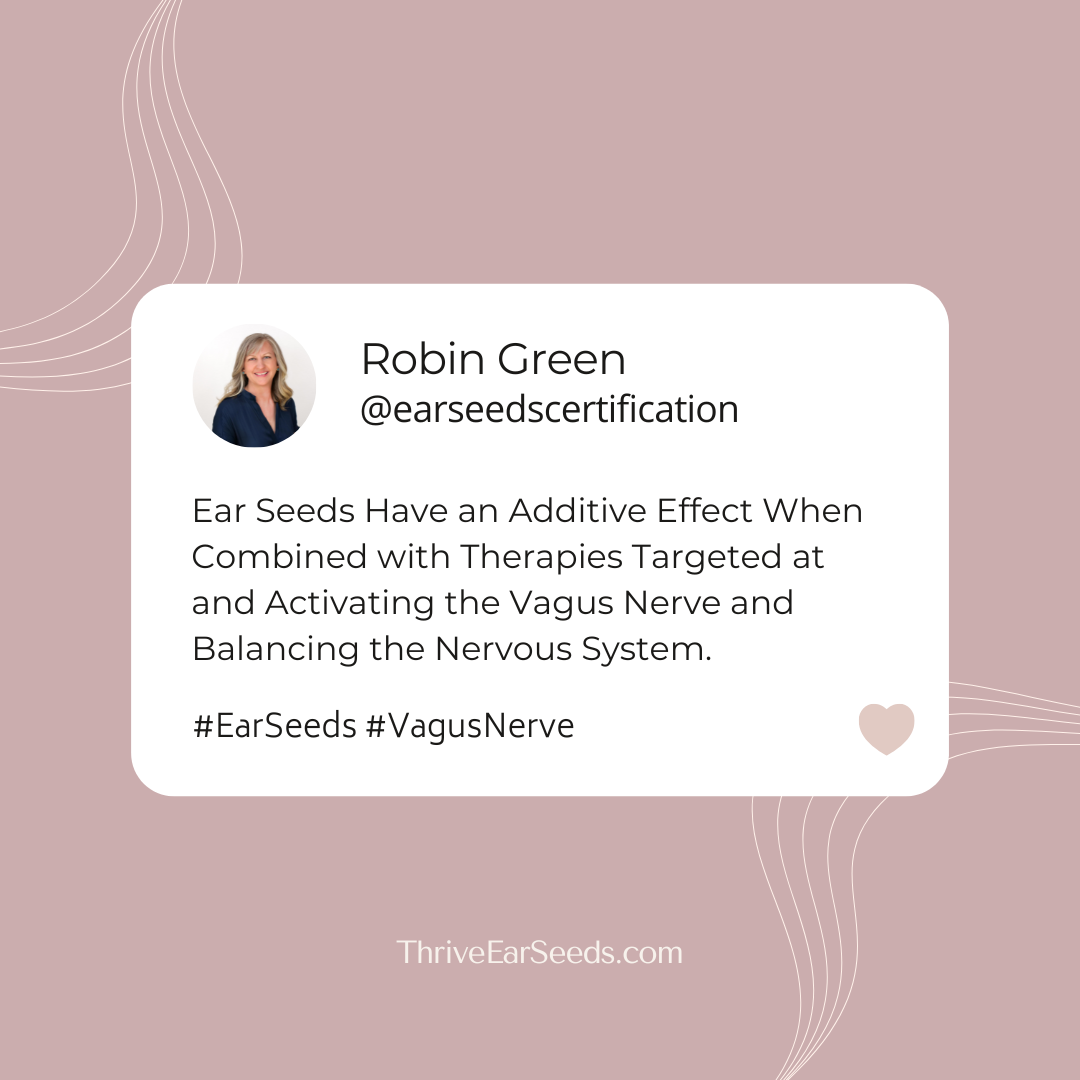
Ear seeds make a great addition to other therapies to balance the nervous system, such as Eye Movement Desensitization and Reprocessing (EMDR), vagal exercises, deep breathing, gentle exercise, limbic system retraining, neurofeedback, EFT tapping, and somatic therapy to name a few. Although these therapies can be beneficial, they come with some drawbacks such as high cost, time-consuming procedures, and low patient compliance in some cases.
The advantage of ear seeds is that patient compliance is very high, and the difference when using ear seeds is quite noticeable for most clients within the first week.
Pressing the ear seeds during stress can have a balancing effect right in the moment, which can help clients quickly exit “survival mode”. Plus, ear seeds are relatively passive since clients generally only need to replace the ear seeds every few days.
Start Using Ear Seeds with Your Clients/Patients Today
Consider introducing ear seeds to your clients to improve their health outcomes and help balance their autonomic nervous system. With consistent use, ear seeds can help retrain the nervous system and promote healing.
To learn more about ear seeds and how to use them with your clients, download our e-book "Unleash the Power of Shen Men."
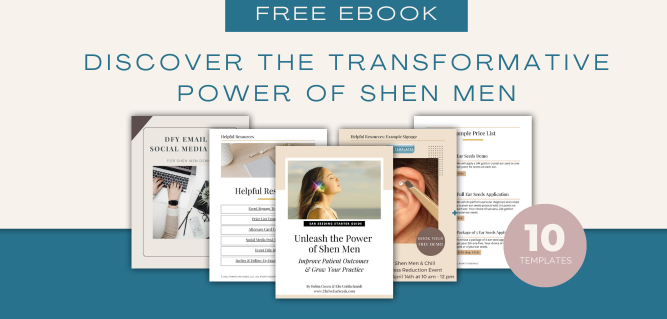
This comprehensive guide will provide you with all the information you need to get started with ear seeds, including how to locate specific acupuncture points on the ear, how to apply ear seeds correctly, and tips for maximizing their effectiveness.
With this knowledge, you can quickly and easily incorporate ear seeds into your practice and help your clients achieve optimal health outcomes. Don't wait any longer, download our e-book today and take action to support your clients' health and wellbeing.
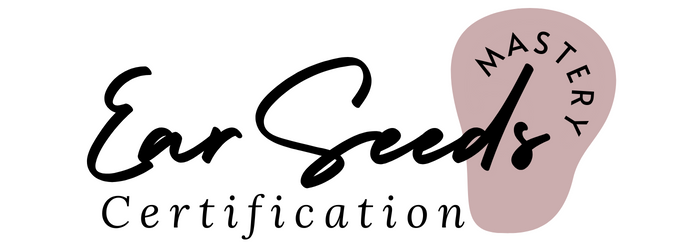

3 comments
Absolutely fascinating information!!! I cant wait to educate my clients in my next newsletter.
It’s absolutely profound! I LOVE it!
Leave a comment
Please log in or register to post a comment